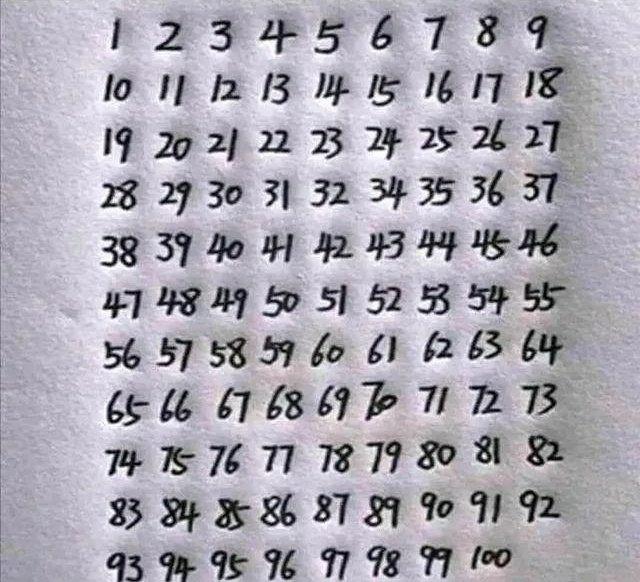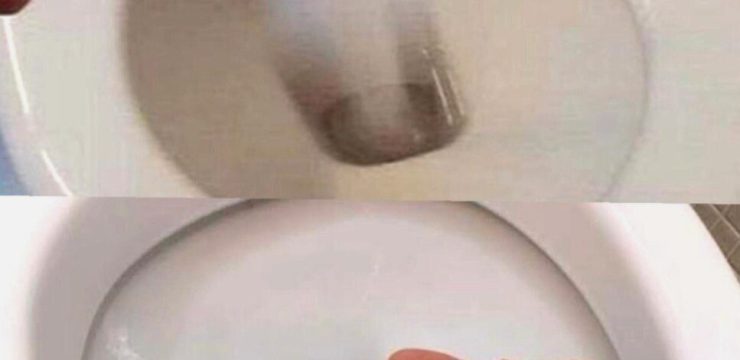When it comes to puzzles and brain teasers, there’s something especially fun about the classic “spot the difference” type of challenge. In this case, we’re giving you a slightly different puzzle: an image with a sequence of numbers from 1 to 100, organized in neat rows. But there’s something off—a number is missing from the sequence. Can you figure out which one it is?

The Challenge
At first glance, the number sequence looks straightforward—just numbers from 1 all the way to 100. But, if you take a closer look and let your eyes glide over each number, you’ll eventually realize that one number is not there. It’s a small gap, but it’s enough to throw off the entire pattern.
Finding the missing number requires sharp observation and a good eye for detail. This puzzle isn’t just about how quickly you can scan the numbers, but also how thoroughly you can examine and focus on the finer points of a seemingly ordinary list. It’s a true test of patience and attention, challenging you to pick up on the one inconsistency among an otherwise orderly set.
Tips for Solving the Puzzle
If you’re feeling stumped, don’t worry—you’re not alone! Puzzles like these can be harder than they first appear, especially when dealing with a long sequence of numbers. Here are a few tips that might help you locate the missing number:
- Focus on Groups of Numbers: Since the numbers are written in rows of nine, one effective strategy is to check each row systematically. By breaking the larger list into smaller, more manageable chunks, it’s easier to spot any inconsistencies.
- Compare Neighboring Numbers: In a sequence like this, numbers should be in a predictable order. If a number seems out of place, that could point to where the missing one should be. Pay attention to where the natural flow of numbers appears to be interrupted.
- Take Your Time: This kind of puzzle rewards careful examination. If you rush through it, you’re more likely to miss the small detail that’s out of place. Go slow, check each row, and make sure you’re giving every number a fair look before moving on to the next.
What’s the Answer?
@lorplayz4 #fyp#fypシ #fypage #viral #views #follow #fypシ゚viral #dance #kid #hold #phone #number? ♬ original sound – lor playz
Spoiler alert! If you’re still trying to figure out which number is missing, now’s the time to pause and take another look before reading on.
Found it yet? The missing number is 66. It’s been left out of the sequence, right between 65 and 67. It’s such a simple omission, yet it can be surprisingly difficult to notice—especially when your eyes are used to the orderly flow of numbers. Finding 66 missing from its rightful spot is a good test of just how well you can maintain focus when dealing with repetitive information.
What This Puzzle Says About You
This kind of puzzle reveals a lot about the way we approach problem-solving and the attention we give to small details. People who quickly spot the missing number tend to be adept at recognizing patterns and detecting irregularities. It shows that you’re able to focus in on the smaller elements of a larger whole, picking up on details that others might easily overlook.
If you found the missing number quickly, it’s likely that you have a natural talent for seeing inconsistencies. You can probably sift through a lot of information and notice when something doesn’t match up. This is a useful skill, not only for puzzles but also in everyday situations where being able to see what others might miss can make a big difference.
If it took you a little longer to find the missing number, or if you had to use some of the tips provided, that’s perfectly okay. Our brains often work by making assumptions, especially when looking at something we expect to be complete and orderly. When we see a sequence of numbers from 1 to 100, our minds assume that they’re all there in the correct order. Breaking out of that assumption can take time and focus, but that’s exactly what makes puzzles like these great exercises for the mind—they challenge us to look beyond our assumptions and see what’s really there.
The Benefits of Brain Teasers
Puzzles like this one are more than just a fun way to pass the time. They’re also an excellent way to keep your brain sharp and engaged. Challenging yourself with brain teasers helps improve your problem-solving abilities and your attention to detail, skills that are useful in both work and everyday life. Taking the time to sit down with a puzzle and work it through, especially one that requires close observation, can also help improve concentration and focus, qualities that are becoming increasingly important in today’s fast-paced world.
Not only do these challenges help train your brain, but they also provide a sense of satisfaction when you finally solve them. There’s something incredibly rewarding about taking a step back, looking at the puzzle from a different angle, and finding the missing piece. It’s a reminder that persistence pays off and that sometimes, slowing down and taking a closer look can make all the difference.
How Did You Do?
So, did you manage to find the missing number right away, or did it take a bit of searching? There’s no right or wrong answer here—it’s all about the process of challenging yourself and giving your brain a good workout. Whether you spotted it instantly or had to go row by row to figure it out, you were engaged in an activity that helps build valuable skills.
We’d love to hear how you did! Were you able to find 66 quickly, or did you need to go back and recheck the sequence? Let us know in the comments. And if you enjoyed this puzzle, why not share it with friends or family to see how they do? Sometimes the simplest puzzles end up being the most satisfying and offer a great opportunity to connect and challenge each other.
In the end, puzzles like this remind us that even seemingly simple tasks can have hidden twists. Life is full of situations where a small detail can make a huge difference, and sometimes, all it takes is a closer look to see what’s missing. So next time you come across a challenge, take a breath, slow down, and look closely—you might just find that the answer was there all along, waiting for you to spot it.





